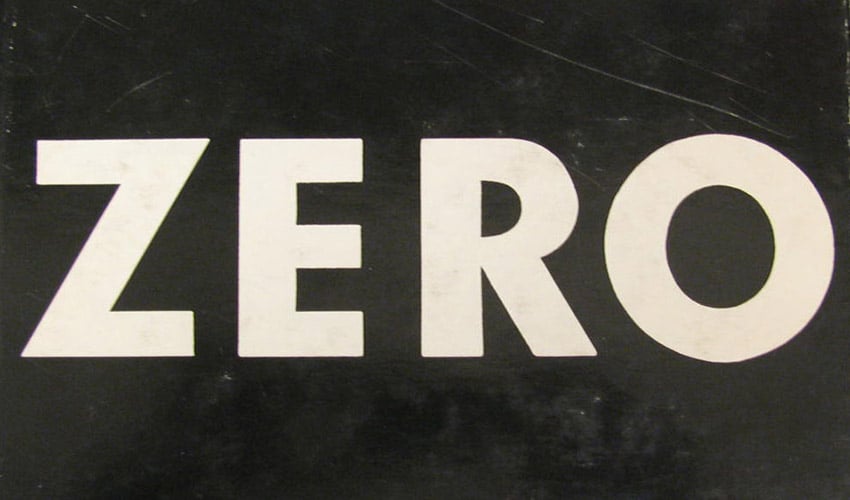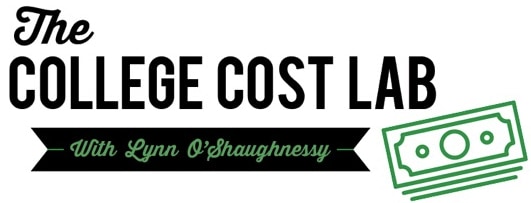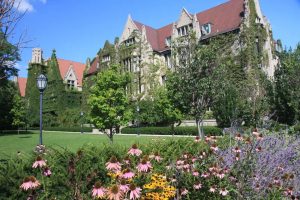
Note: I wrote this post last year, but it’s just as relevant today. Lynn O’Shaughnessy
High-achieving students who apply every year to the Ivies and other elites schools have heard the grim statistics about how ridiculously hard it is to get into these schools.
That reality, however, doesn’t deter students from applying even though the chances for most smart students is ZERO percent.
Ambitious teenagers aiming to attend the nearly impregnable schools at the top of the rankings heap tend to assume that if they apply to enough elite institutions they will surely get into one of them. They mistakenly treat the admission process as a lottery, which has lead to application inflation.
I heard once from a teenager who applied to more than 30 schools and he said that wasn’t unusual among his wealthy peers at a top high school in Los Angeles.
Encouraging Pointless Applications
A big culprit in this phenomenon are the schools themselves. The institutions work hard to encourage students to apply by producing their fear-inducing rejection figures.
Many elite schools strive to attract as large an applicant pool as they can by encouraging students who have zero chance of getting admitted to their institutions to send in applications.
I can’t emphasize enough that if your child gets literature from an elite school, it means N-O-T-H-I-N-G. It certainly doesn’t indicate that he or she has better odds of getting into the institution.
Pleasing U.S. News
The intent of this craven practice is for schools to burnish their images, impress families, please college presidents and boards of trustees and, of course, curry favor with U.S. News & World kingmakers. U.S. News gives brownie points to schools that reject more students. Higher rejection rates also help a school’s bond ratings.
Elite University Envy
If you want to read a story that examines this practice in more depth, I’d urge you to check out the following article from The Chronicle of Higher Education that appalled me when I read it a few years ago: Application Inflation.
The article focused on a cynical admission policy change at the University of Chicago that had not been experiencing any trouble attracting excellent applicants. Administrators, however, had decided that wasn’t good enough.
A dean said that he wasn’t satisfied because some schools on the East Coast were attracting more applicants. In an interview in the school’s student newspaper, the dean said the U. of Chicago deserved more applications than Columbia University because University of Chicago was a better school. Does anyone else find this rational galling?
The school beefed up its recruiting to target more students so they could reject more applicants. I wonder if the dean got a bonus for breaking more hearts.
The executive who helped institute this policy, which led to the tripling of Chicago’s applicant pool since 2006, landed at Colby College, an elite liberal arts college in Maine. Just like U. of Chicago, Colby has never had any trouble attracting phenomenal applicants, but when a new college president arrived on campus, the top enrollment administrator was replaced with the Chicago numbers guy.
Here is a story that appeared in The Chronicle that mentions the Colby change: The Hottest Seat on Campus.
By the way, encouraging noncompetitive students to apply to institutions is hardly just a preoccupation of the most elite schools. I wrote a story about how countless schools further down the food chain do the same thing: Should You Be Flattered By a Red Carpet Treatment?
Schools Want Students in Top 10%
If elite schools were honest, they would tell applicants without a hook not to bother applying if they aren’t in the top 10% of their high school class. (I will explain what I mean by a hook shortly.) And, as a practical matter, nearly all of these 10 percenters won’t be accepted either. At a college conference that I attended last week in Indianapolis, for instance, a keynote speaker mentioned that Stanford rejects 70% of students with perfect SAT scores.
You can see for yourself how many students come from the top 10% of their high school classes by looking at the stats for each school on the College Board. When you call up a school’s profile on the College Board’s website, click on the Applying hyperlink and then the Academics and GPA hyperlink.
Here are examples of schools that strongly favor the 10 percenters;
Stanford’s 10% stat:
Brown University’s 10% stat:
Harvard University’s 10% stat:
10% Exceptions
It doesn’t matter, by they way, if a high school contains a large number of brilliant teenagers. Elite colleges and universities want the top 10%.
There are some exceptions to this 10% rule. The schools will waive the 10% rule for some applicants with a hook. These students can be legacies, recruited athletes, high-achieving minorities, professors’ kids and the children of celebrities and the super rich.
Why 10%?
Why the obsession with the top decile?
No one would argue that teenagers who rise to the top of their high school classes are going to be better students than other smart kids. The reason for the 10% rule is once again because of U.S. News & World Report. The college rankings giant gives brownie points to schools that fill their freshman classes with 10 percenters. It’s a nauseating reason, but it’s true.
10% Admission Exceptions
Many private high schools, as well as affluent public high schools, have fought back by no longer ranking. I’m sure most of these schools believe they have won this battle, but they haven’t.
Eliminating rankings hasn’t deterred colleges and universities from generating their own rankings with the information that they have for individual high schools. You can learn more about how colleges will rank students themselves if the high schools don’t cooperate by reading the following blog post by Parke Muth, a former associate dean of admissions at the University of Virginia: Dirty Big Secrets: Part 2 Rank and Class
Bottom Line:
Schools that fish almost exclusively in the 10-percent pond should tell students, who aren’t in that decile that they have virtually no chance of getting in without one of the aforementioned hooks. That, however, isn’t going to happen.
It’s heartbreaking to see so many overly stressed and overly committed students ruining their high school years by trying to attain the cramped admission definition of “perfection.” I would argue that not being in the 10 percent can be freeing.
These kids can stop chasing an impossible dream and focus on all the wonderful schools in this country that really, truly want them.
Learn more: 
I will be holding my next online lass – The College Cost Lab – in either late January or February. If you want to be among the first notified when I have more details, just send me an email at [email protected].





I agree with your assesment of the college admissions, however I believe it all starts just a step further away. The high school rankings which you touched on are distorted to favor any student on a liberal arts path. A student in our local high school can acheive a top ten percent ranking by taking the basic math, science and language classes and taking advanced arts classes. The arts classes carry a much easier workload, most have no homework, no summer assignments, and only minimum testing. Many teachers are handing out “A’s” just for showing up to class. As a result many students, (some with excellent math and science skills), are switching to art and music classes. Many of our students freely admit that they are taking the classes only because it is a much easier way to climb the class rankings. I know of several extremely gifted students in classes such as AP calculus, AP physics… that are extremely frustrsted at working extremely hard at their studies to keep an A average in such difficult classes, while their liberal arts counterparts carry a perfect 100% because they show up to class. What is this doing for our students and our country if we are basically telling them that math and science is not benificial at such an influencible age? This results in the majority of our 10 percenters being in the liberal arts category while our hard working math and science kids are being passed over for admissions, as well as scholarships to our “best” schools. Talk about backward thinking, it is no wonder we seem to be losing ground on education.
Hi there! Your deeply, incredible flawed arguments exemplify the misguided and uninformed public opinion on an “education system” that you truly have no idea of the students, teachers, and workings within. The “liberal arts” students of your creation must be geniuses to consistently own the top 10%! And on top of advanced art classes?? Wow! The AP Studio Art courses are very rigorous, with a curriculum requiring the creation of 12 complete pieces centered around an original concentration (a theme, really) that must be justified in your AP Test submission, and then 12 different pieces that encompass a broad range and mastery of concepts such as depth, line value, perspective, color theory, and so on. Over the summer, students enrolled in AP Art must complete 12 additional pieces before they begin the class in order to have a few that may be considered for submission as breadth. That’s with all three studio art courses. With the Art History exam, it’s more akin to the other history courses AP offers. Having never been in any of these classes yourself, Chris, you vastly underestimate the standards to which these students are held.
Who are these “gifted” math and science students who so willingly give in to the temptations of “easier” classes? Not very gifted, I assume. AP Physics and Calculus classes are very difficult classes- I know. I also know that they are weighted on a student’s transcript and in their GPA a full point higher than the “basic” math, language arts, and science classes. This means that besides actually failing and having to drop the class entirely, there is no way a student taking an entirely remedial class schedule will end up in the top 10% before their AP peers.
Did you know that any local high school offering AP courses receives a bonus for offering them? That the teachers of said courses receive incentives and bonuses to make sure their students get the highest AP score of 5? Certainly a good way to get schools interested.
What saddens me the most regarding your ignorant and ill-formed comment is that you truly have no understanding of arts, liberal arts, and STEM programs. The “liberal arts” you’re thinking of are simply the arts- music, visual, and performing arts. All of the aforementioned have been held in the highest regards to bolster the well-rounded and fully formed education of the future intellectual. These are a key part of what is known as the Renaissance education, dating back to, yes, the Renaissance. The lauded and accentuated years of European history formed what many still consider the best way to educate future generations. Intellectualism prevailed- and that included the study of arts. Liberal arts, what you so incorrectly cite, consist of anthropology and other humanities. Funny, bar an IB (international baccalaureate) school, anthropology is not a course offered in your local high school.
Show me these “hardworking math and science students” being passed over in admissions and for scholarships in favor of students who only ever aced remedial classes. Show me the student who persisted through STEM programs and AP courses with every intention of going to Johns Hopking or MIT and was disappointed by the miracle remedial student who cheated their way through the system in order to make it to some of the BEST colleges in the country- colleges they wouldn’t even be qualified to go through because of their complete lack of higher education.
Hello, Chris. Meet your friendly neighborhood “liberal arts” student. Boy, it sure would be nice to have school ranking always in my favor! As it is, the international baccalaureate at my high school time and time again favors the accelerated math and science students. If any of us, however, truly wish to get into some of the best colleges in the country, we can never simply rely on the classes at school. Extracurriculars pave the way toward an application that fights for itself. Precollege programs at these colleges or others in the discipline of their choosing, for example, extra courses, honor societies, competitions…
There are so many ways for a student to put up a fight in the system that is truly against them- these Ivy admissions systems. The outrage should be directed there, with the proper information to support it.
The mythology surrounding the hallowed halls of the Ivy League needs to end, as well as the ignorance surrounding the arts and the education in high school.
Hello! Thank you so much for these articles! They are extremely informative and quite enlightening.
Though I was never they type of person to stress out about being ‘the best’, my not getting in to any Ivies despite my fairly good high school career was terribly disheartening. I even had to take a [forced] gap year because I could not garner enough financial aid to attend the two institutions I did get into.
Now, two years later, I am going at it again. This time around however I can barely even dredge up the motivation to apply anywhere for fear that it will all be a waste of time and effort.
Yet, I feel as if I need to go; if not for my family, then for the knowledge and network I need to gain to achieve my goals.
So what does one do? When one knows how ‘screwed up’ the [post-secondary] education system is and has little to no faith in said system…. what does one do?
How do I find those colleges that I will enjoy? …. And that will not have a ridiculous, joke of an admission’s process?
Thank you for your time!